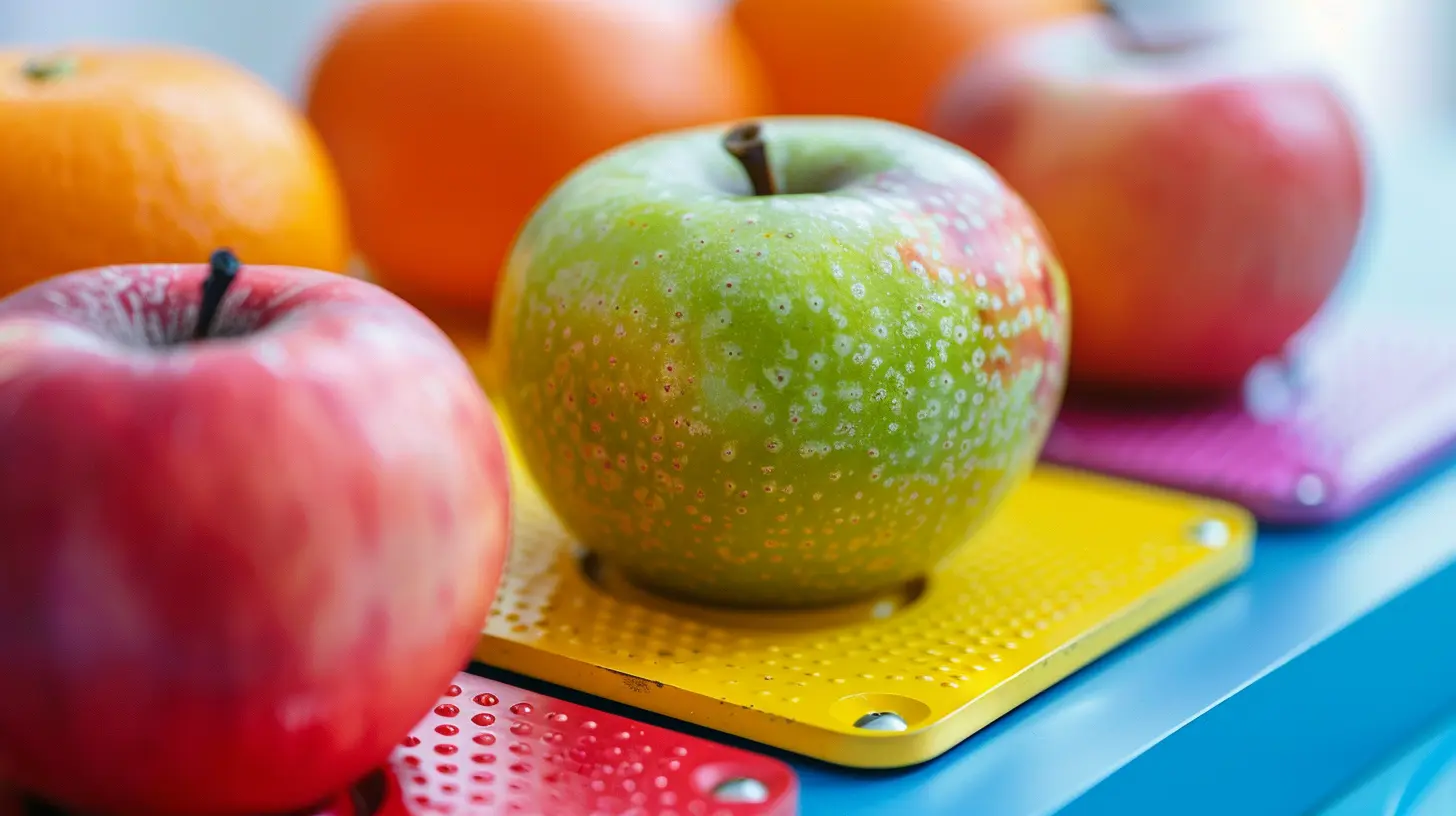How to Use Positive Reinforcement to Stay on Track with Weight Goals
30 July 2025
Let's face it—sticking to weight goals can feel like wrestling a bear some days. Temptations are everywhere, motivation fluctuates, and, honestly, some days feel like a total loss. But what if I told you that there's a science-backed, feel-good strategy to help you stay on track… and actually enjoy the process?
Enter positive reinforcement. 🧠✨
No, it's not some complicated psychological tactic that only therapists use. Positive reinforcement is something you already know—rewarding behavior to encourage more of it. Think about it: when a kid gets a gold star for cleaning their room, they’re more likely to do it again, right? We’re not that different as adults. We just crave different “gold stars.”
In this article, we’ll dive deep into how you can use positive reinforcement to finally stay on track with your weight loss or fitness goals—without hating every second of it.
What Is Positive Reinforcement, Really?
At its core, positive reinforcement means adding a rewarding experience after a behavior to make you want to repeat it. Simple, right?Let’s say you hit your step goal for the day. Instead of just shrugging and moving on, you treat yourself to something that feels good—maybe a hot bath, an episode of your favorite show, or a small non-food reward. That reward acts like a mental high-five!
Over time, your brain starts linking the good feeling with the habit, which makes it easier to stay consistent. It’s habit-forming in the best way possible.
Why Willpower Alone Isn’t Enough (Spoiler: It’s Not Your Fault)
We’re taught that discipline is the key to weight loss. Just push harder, right? But studies show that willpower is like a battery—it drains throughout the day. So that same fire you had at 7 a.m. might feel like a soggy match by dinner.That’s where positive reinforcement can be your secret weapon. It sidesteps the need for constant self-control by creating automatic behavior loops. Think of it like putting your goal on autopilot.
You can either:
- White-knuckle your way through every salad and workout,
- Or, spark joy in your journey (yes, we’re channeling Marie Kondo here).
The Psychology Behind Why It Works
Here’s the deal. Your brain loves rewards. It’s wired to seek pleasure and avoid pain. When you associate a behavior (like going for a walk) with a good feeling (like praise or a personal treat), your brain flags that behavior as “let’s do that again!”That’s dopamine at work—a feel-good chemical that reinforces habits. And the best part? It doesn’t need to be huge. Even small rewards can trigger that dopamine release.
The goal is to make healthy habits feel satisfying, not punishing.
Building a Positive Reinforcement Plan That Actually Works
So how do you use positive reinforcement in real life—not just in theory?Let’s break it down into a super practical plan you can start using today.
1. Set Clear, Specific Goals 📝
Vague goals = vague results. Instead of “I want to lose weight,” try:- “I want to walk 10,000 steps a day for the next 5 days.”
- “I will eat veggies with every lunch and dinner this week.”
Specific goals are easier to measure, track, and reward. And they make it way clearer when it’s time for a victory dance.
2. Choose Your Rewards Ahead of Time 🎁
This is the fun part. Pick rewards that actually motivate you. And no, they don’t have to be big or expensive.Here are a few ideas:
- Watch an extra episode of your favorite show (guilt-free).
- Buy a small item you’ve had your eye on.
- Take a relaxing bath with candles and music.
- Get a new book or fitness gear.
- Enjoy a non-food treat like a massage or mani-pedi.
Pro Tip: Make a "Reward Jar" and fill it with slips of paper, each with a different treat idea. Pull one out when you hit a mini-goal!
3. Track Your Progress in a Visual Way 📊
Seeing progress is rewarding by itself. Our brains love visuals—it’s why we’re so drawn to checklists and progress bars.Try using:
- A habit tracker app
- A wall calendar with stickers for each successful day
- A bullet journal with colorful habit logs
Bonus dopamine every time you tick something off. It’s the grown-up version of a gold star chart!
4. Layer Positive Self-Talk 👏
Don't underestimate the power of words. How you talk to yourself matters—big time.Try replacing these:
❌ “I messed up again. Why can’t I stick with this?”
✅ “I had a rough moment, but I’m proud of getting back on track.”
Positive reinforcement isn’t just about external rewards—it’s also about internal praise. Be your own hype squad.
5. Celebrate the Small Wins 🎉
We often overlook the little victories because they seem insignificant. But those micro-milestones are what build long-term consistency.Did you drink enough water today? Boom—win.
Did you say no to that second dessert? High-five.
Did you choose the gym over the couch? Legend.
Every step forward is worth celebrating. The more you acknowledge those moments, the more you train your brain to keep chasing them.
6. Make It Social 👯♀️
We’re social creatures. Something magical happens when other people notice and celebrate our wins.Ways to make it social:
- Share your goal with a friend or online group.
- Post your progress updates (if you’re into that).
- Reward yourself with a group activity, like a walk with your bestie or a fitness class.
A little “You’re crushing it!” from someone else goes a long way.
7. Adjust as You Go 🔧
Not every reward will keep working forever. Our motivation levels change. What feels motivating today might feel “meh” in a month—and that’s okay!The key is flexibility.
Ask yourself:
- What's still working?
- What feels stale?
- What new treats or strategies could re-energize my momentum?
This isn’t a “set-it-and-forget-it” deal. Personal growth is messy and dynamic—and your reward system should be too.
Real-Life Examples of Positive Reinforcement in Action
Need some inspiration? Check out how these fictional (but relatable!) folks use positive reinforcement:Sam, the Busy Parent:
Sam struggles to find time for the gym. So every time they complete a 30-minute home workout, they reward themselves with a 20-minute uninterrupted alone time—reading, hot bath, or gaming session.
Jess, the Social Butterfly:
Jess wants to cook more at home. Every five home-cooked meals, they plan a fun night out guilt-free. It keeps their social calendar full without derailing their goals.
Mike, the Numbers Guy:
Mike uses a spreadsheet to log calories burned and workouts done. When he hits 20 workouts in a month, he buys a new piece of fitness gear or new running shoes. Seeing the numbers stack up keeps him pumped.
Mistakes to Avoid When Using Positive Reinforcement
Let’s quickly flag a few common missteps:🚫 Using food as a reward every time.
That just reinforces the idea that unhealthy treats are the best motivator—which can backfire.
🚫 Punishing yourself for slip-ups.
Positive reinforcement is about encouragement, not guilt trips or “earning” your way out of shame.
🚫 Going too long without a reward.
Don’t wait until the 30-pound milestone to treat yourself. Break your goal into smaller steps. Celebrate often.
Final Thoughts: Make Motivation Feel Good
Here’s the truth—this journey should feel empowering, not exhausting. Positive reinforcement helps keep your actions aligned with your goals while keeping your spirit lifted. It turns the process into something sustainable… even fun.So instead of dragging yourself along with sheer willpower, try nudging yourself forward with kindness, encouragement, and little daily moments of joy. Think of it as cheering for yourself from the sidelines. 💪📣
Start today—pick one small goal and one reward, and see how it changes your whole vibe. Your brain (and your body) will thank you.
all images in this post were generated using AI tools
Category:
Weight MaintenanceAuthor:

Angelo McGillivray
Discussion
rate this article
1 comments
Lyanna McAllister
Great article! Utilizing positive reinforcement is a powerful strategy for achieving weight goals. Celebrating small victories and rewarding yourself can greatly enhance motivation. It's a practical approach that fosters a healthier mindset and promotes long-term success. Keep up the great work!
August 13, 2025 at 4:14 PM


